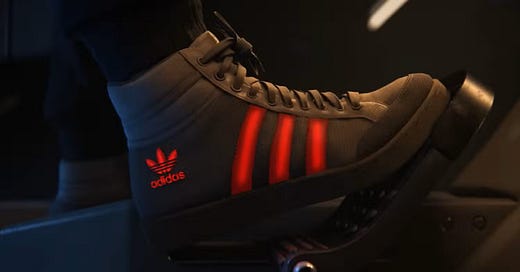🕹️ When Games Become Billboards
When Naughty Dog unveiled Intergalactic: The Heretic Prophet at The Game Awards, the internet predictably lit up with chatter. Most of it, of course, was about the game’s so-called “wokeness,” because what else is new in gaming discourse? But once you wade past the usual culture war clamor, there’s another layer worth dissecting: the absurd amount of product placement in the trailer. Be it the Porsche AG, or the Adidas sneakers, or even the Sony music system.
This isn’t exactly groundbreaking for entertainment. Hollywood’s been cashing in on brand cameos for decades, ever since Spielberg turned Reese’s Pieces into E.T.’s snack of choice, boosting the candy’s sales by 85%. In Skyfall, Heineken shelled out a casual $45 million for Bond to sip their beer. By 2020, the film industry was pulling an estimated $1.2 billion a year from product placement, with brands like Toyota and Dell happily throwing their logos onto the big screen.
But gaming? Gaming takes it to a whole new level. Unlike movie audiences, who passively watch brands flash across the screen, gamers are engaging with them. Monster Energy drinks in Death Stranding don’t just sit on a counter—they literally replenish your stamina. Over in Fortnite, players can drive Ferraris, flex Balenciaga skins, and shoot hoops in Nike-branded drip. These aren’t just ads, they’re integrated into the gameplay loop for hours on end.
And for brands, it’s a goldmine. Not only do games provide immersive, interactive impressions, but they also let developers collect data that Hollywood can’t even dream of. How many times did you pick up that in-game energy drink? Which variant of the Ferrari are fans driving around the most? Developers can potentially track all of it, and that’s a brand manager’s fantasy.
So yeah, maybe you’re mad about Intergalactic's politics, but let’s not ignore the more interesting matter here: product placement isn’t just sticking around, it’s leveling up
.




